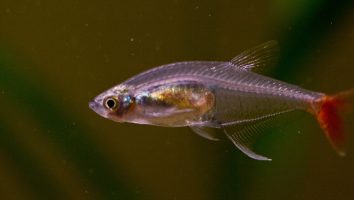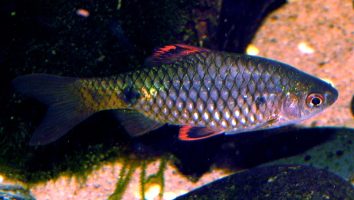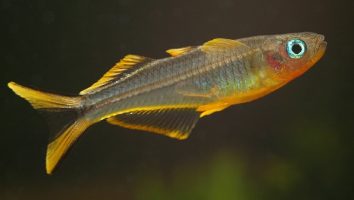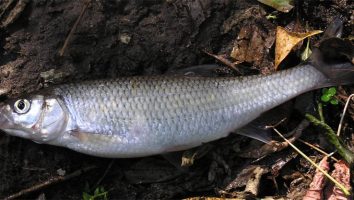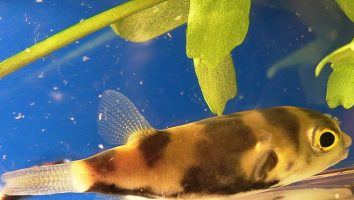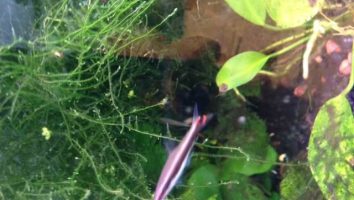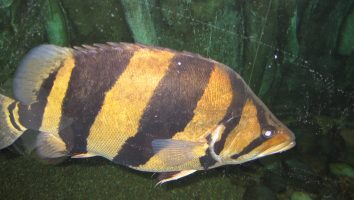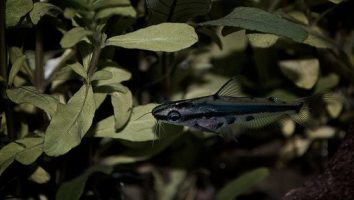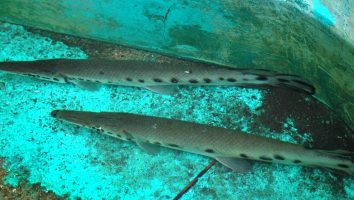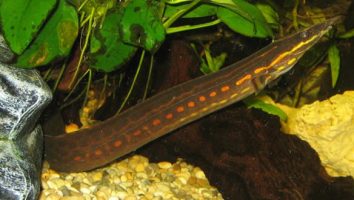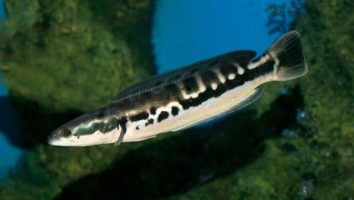Peppered corydoras are a beautiful and easy to care for freshwater fish. This species is a great addition to any aquarium, and will quickly become one of your favorites.
But there’s a lot of misinformation out there when it comes to this fish. We’ve read so many conflicting suggestions on care and tank mates over the years!
So we made this guide to set the record straight. In it, you’ll learn the correct Peppered corydoras care guidelines.
Table of contents
Species overview
Peppered corydoras (Corydoras paleatus) are a freshwater catfish that is native to South America. They can be found in Brazil, Peru, and Bolivia and prefer to live in slow-moving waters with a lot of vegetation.
The peppered corydoras gets its name from the black spots that cover its body. These spots are used as a form of camouflage and help the fish blend in with its surroundings.
This species of corydoras is a peaceful fish that does well in community tanks. They are bottom-dwellers and prefer to live in groups, so it’s best to keep them in tanks with at least 5-6 other fish.
Appearance
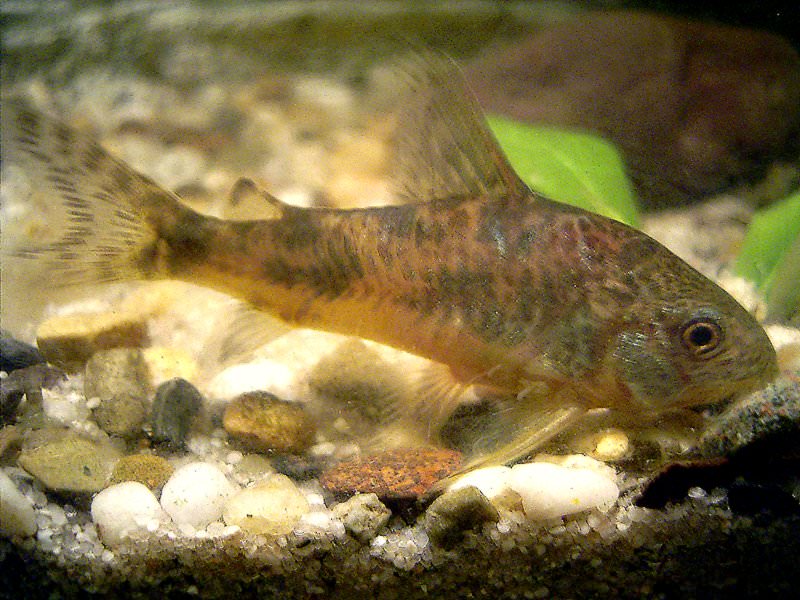
The first thing you’ll notice about this species is their coloration. As the name suggests, they’re a lovely peppered black and white. The black on their body is actually more of a dark gray most of the time.
This coloration is beautiful and really stands out in a freshwater tank.
The body shape of the Peppered Corydoras is very similar to other Corydoras species. They have a long and slender build that’s very hydrodynamic. This helps them zip around the tank with ease.
They have a very small head in comparison to the rest of their body. Their mouth is actually quite small as well and is pointing down most of the time.
The fins on this species are all relatively small. The dorsal fin is the longest and is slightly taller than their caudal fin. Their anal and pectoral fins are both shorter than the dorsal fin.
All of the fins on the Peppered Corydoras are clear/translucent.
Lifespan
Peppered corydoras have a lifespan of around 5 to 10 years. This wide range is due to the fact that there are a number of factors that can impact their lifespan.
The quality of the water they’re living in, for example, is a huge factor. If the water is too dirty then their lifespan will be shorter.
The food they eat matters as well. A diet that’s not well balanced can lead to health problems that shorten their lifespan.
Size
These little guys only grow to be about 2.5 inches when fully mature.
Tank
Tank Size
The minimum tank size for a Peppered Corydoras is 20 gallons. This is assuming you’re keeping them in a school of at least 5 or 6 fish (which you should).
We personally recommend a slightly larger tank if you can accommodate it. Every extra space will make a big difference and allow you to keep a larger school or more tank mates if you’re interested in a community tank.
Water Parameters
Peppered corydoras are a bit more sensitive to water parameters than some of their corydoras cousins. They still need the same warm, slightly acidic water that all tropical fish prefer.
To provide the best possible environment, aim for the following water parameters.
- Water temperature: 72 to 78 degrees Fahrenheit
- pH levels: 6.0 to 7.2
- Water hardness: 2 to 12 dGH
- Alkalinity Levels: 4-8 dKH
What To Put In Their Tank
The interior of the tank is just as important as the exterior when it comes to these fish. You’ll want to create a space that’s comfortable for them and includes a few key elements.
The substrate is the foundation of their home, so it’s important to get it right. We recommend a soft, sandy substrate for these fish. This will feel better on their barbels and help prevent any cuts or scrapes.
Corydoras are bottom-dwellers, so you’ll want to make sure there are plenty of places for them to hide. This can be in the form of rocks, driftwood, or even caves.
Plants are always a nice addition to an aquarium, but we recommend avoiding them with these fish. Corydoras are known to uproot plants as they forage for food. If you must include plants, then go with something that’s heavy or anchored down well.
Common Diseases
Peppered corydoras are a hardy and disease-resistant fish, but that doesn’t mean they can’t get sick.
The most common disease that these fish experience is ich. This is a parasite that will attach itself to your fish and cause white spots to form on their body.
This disease is highly contagious and can quickly spread to other fish in your tank. If you notice any white spots on your fish, it’s important to act fast.
Begin treatment immediately and consult your vet if the problem persists.
Other potential diseases include infections, parasites, and fungal growth. These are all relatively rare but can still occur if the fish are kept in poor water conditions.
To prevent these fish from getting sick, it’s important to maintain a clean and stable tank. Regular water changes and filtering will go a long way in keeping your fish healthy and disease-free.
Behavior & Temperament
Peppered corydoras are peaceful, social fish that do best in groups. In the wild, they live in large schools, so it’s important to try to replicate that environment in your aquarium. They’re shy fish, so the more of them there are, the less stressed they’ll be.
These fish are bottom-dwellers, so they’ll spend most of their time near the substrate. They’re constantly on the move, looking for food or a place to hide. When they’re not swimming around, they like to rest on plants or hide in caves.
Peppered corydoras are peaceful fish, but they can be territorial when it comes to their food. They’re not aggressive, but they will nip at the fins of other fish if they feel like they’re being threatened.
Tank Mates
Peppered corydoras are peaceful bottom-dwellers. As a result, they do best with other species that occupy the same space in the water column.
Compatibility is also high since these fish come from the same general region of the world. The Amazon basin is home to a large portion of the tropical fish in the aquarium trade.
That said, here are some good peppered corydoras tank mates:
- Neon Tetras
- Ember Tetras
- Cardinal Tetras
- Ghost Shrimp
- Cherry Shrimp
- Guppies
- Platies
- Mollies
Breeding
Peppered corydoras are a great beginner fish for those looking to get into breeding. They are relatively easy to breed and make great community tank mates.
The first step is to sex your fish. This can be done by looking at the shape of their fins. Males have shorter, thinner fins, while females have longer, rounder fins. You will need at least one male and one female for breeding.
Once you have your pair, you will need to set up a breeding tank. The tank should be at least 10 gallons and should have a sponge filter. The water should be well-filtered and have a temperature between 72-78 degrees Fahrenheit.
You will also need to add some plants and hiding places for the fish. Corydoras like to have a lot of places to hide, so be sure to add plenty of rocks, driftwood, and plants.
When the tank is set up and the fish are acclimated, you can begin to feed them live or frozen foods. Bloodworms, brine shrimp, and daphnia are all good choices.
As the female begins to fill with eggs, she will start to look rounder. When she is ready to lay her eggs, she will do so on a flat surface like a rock or a piece of driftwood. The male will then fertilize the eggs.
Once the eggs are laid, you can remove the adults from the tank. The eggs will hatch in 5-10 days.
When the fry are free-swimming, you can begin to feed them baby brine shrimp or other small live foods. Be sure to feed them several times a day. As they grow, you can begin to feed them larger foods.
Conclusion
The Peppered Corydoras is an excellent choice for a beginner fish keeper. They’re very easy to care for and get along well with other community fish.
They’re also very attractive fish that will add some visual interest to your tank.
If you’re looking for a low-maintenance fish that’s also fun to watch, the Peppered Corydoras is a great choice!

